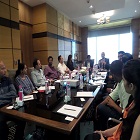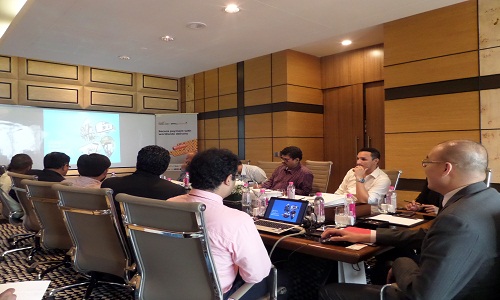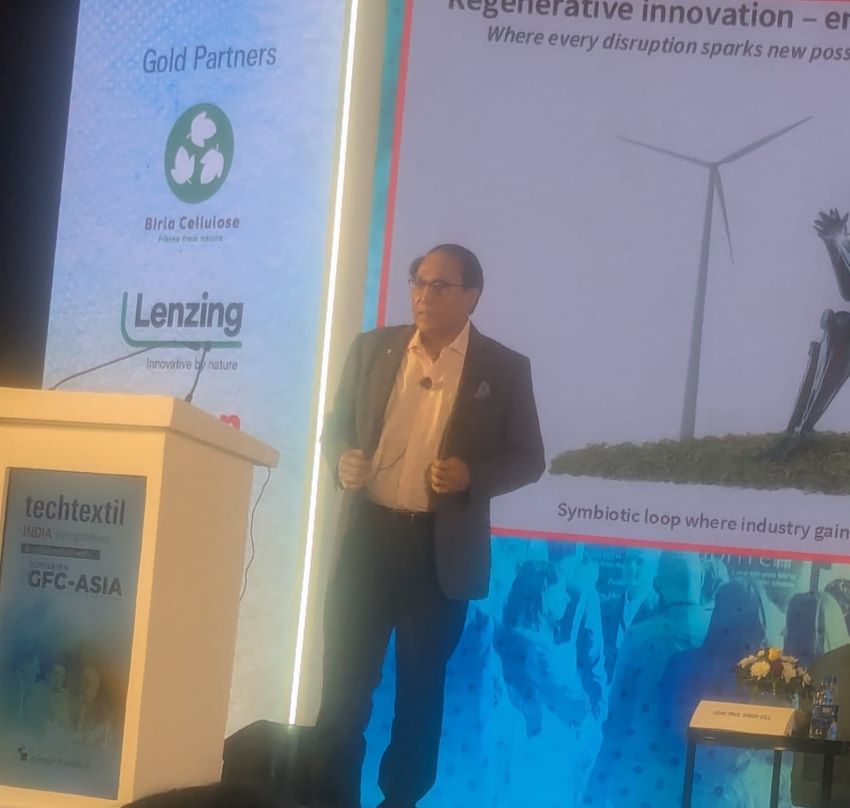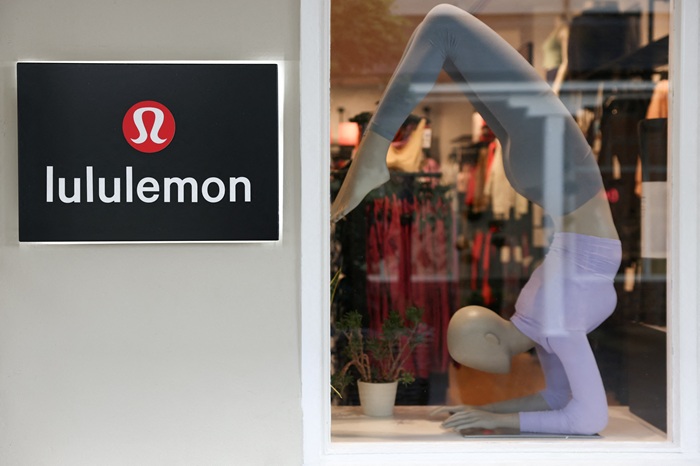FW
China’s production of extra-long staple (ELS) cotton could be three times last year's crop in 2015-16. Output could be as much as 1,80,000 tons, triple of last year's 60,000 tons. ELS cotton or pima cotton is top quality cotton and makes up a tiny portion of total cotton consumption. It is mainly used by luxury shirt brands and in high end bed sheets. Chinese mills consume most of the fiber but local output declined under a government stockpiling policy that paid generous prices to farmers for regular cotton and offered no incentive to growers of higher quality ELS.
ELS premium over regular cotton has risen significantly in recent years after drought and competing crops in California reduced production in the world’s top exporter. After China abandoned stockpiling last year, and offered new subsidies connected to market prices, farmers began to plant significantly more ELS. China’s subsidy for the fiber is 1.3 times the regular cotton subsidy.
A smaller US crop will do little to support prices, given China’s surge in output. Chinese traders are not interested in US imports, since they have expectations of lower Chinese prices. However, China will buy some US pima for certain types of yarn.
Partnering growth has been Birla Cellulose’s focus and to support this vision, the company has decided to partner LAPF members across the country. Liva was represented by three LAPF partners during the 4th edition of Galleria Intima, India’s largest intimate apparel show.
This initiative by Intimate Apparel Association of India (IAAI) proved to be an excellent opportunity for meaningful collaborations with brand owners, senior management of reputed brands, purchasing heads, product merchandisers of buying houses, importers and independent designers resulting in ideation and exchange of thoughts. Three reputed brands in the intimate apparel sector were represented at the Liva stall.
A leader in intimate apparel segment, Rupa showcased women’s wear brand, Femora’s zero per cent viscose and modal range of camisoles and leggings. An innovative leader in thermal category, Neva showcased their latest innovation in amicor viscose, acrylic-viscose, cotton modal and cotton viscose, whereas ARKAP Knits, Mumbai partnered leading retail brands through their innovative range of knitted fabrics like 100 percent viscose, modal, cotton modal, cotton viscose and melanges.
As Aseem Doda, Vice President-Hub Marketing, Birla Cellulose explained, “Modern India is waking up to and loving the benefits that a perfect innerwear can bring to their lifestyles. Liva innerwear has been appreciated by consumers and we are working towards collaborating with leading intimate apparel brands.”
In Srikakulam district of Andhra Pradesh, the Union Ministry of Textiles’ skill development programme is proving to be a success. Under this programme, training is imparted to women in operation of electronic sewing machines, and these machines are expected to double their income with less physical effort.
Reputed textile companies located in Karnataka and Tamil Nadu hired several women from rural areas of Srikakulam district with enhancement of skills. This is all because of the initiative of the Union government through various local agencies.
Savvana Umamaheswari, Founder, Gayatri Women Association for National Integration and Social Service, said women’s empowerment had become a reality with training programs sponsored by the Union government. She stated that as, Srikakulam women were good at operating electronic sewing machines, many textile companies preferred to hire them. Also, since they are hard working, it has helped them earn more— up to Rs 15, 000 per month. In the last one year, around 100 candidates bagged jobs with a decent income, some even started their own shops.
Besides, many women felt that by investing up to Rs 25, 000 on each machine, they could create self-employment. B Ramanamma, a resident of Srikakulam said that initially, they were afraid to operate the machines. However, the two-month training programme helped them learn its operation and new designs and now they feel confident about starting a tailoring centre and help other women to earn as well.
With the crash in China's markets and unfavourable policies of the government for sluggish business environment, cooperative textile mills in Maharashtra have decided to hold a one-day strike on September 1 to mark their protest. The decision was taken during a meeting of mill owners in Sangli. The executive director of Textile Federation of Maharashtra, S D Bauskar, said there is no option left other than shutting units in the face of low demand for yarn and some grave fundamental issues the industry has been subjected to due to the government’s apathy. Industry owners are incurring losses and shutting down is the only way to prevent this damage.
Stakeholders’ demands include subsidies on exports, a cut in power tariff and short-term loans, meeting their current requirement to pay wages. Experts, say, spinning mills are not the only ones facing the crisis, weaving and process houses are also going through this turbulent phase. Many power looms in Maharashtra are already closed for about a month or so.
Bauskar says the crisis may aggravate further if the state government does not pay any attention to the demands being made by the textile sector. The continuous indifference on the part of the government would only encourage the shift of the industry from Maharashtra to other states.
Bangladesh will probably remain the top garment sourcing destination for global retailers at least for the next five years. During this period, garment exports will grow 7 to 9 per cent year-on-year while India and Vietnam will be its nearest competitors. Some African countries are also coming up strongly in the global garment business. But China remains the undisputed leader in garment exports, with eight times the dollar volume of exports than the number two Asian apparel sourcing country, Bangladesh. Vietnam and India are tied for the third place.
Though Chinese apparel production has fallen since 2010, the dominance of global apparel sourcing market, the mix change toward Chinese consumers, and the substantial size of its growing middle class will keep China the apparel production powerhouse for the foreseeable future. Many of China’s garment makers are looking to open facilities in Cambodia, Vietnam and Myanmar as well as in other countries.
As for Africa, many governments in the region are using the textile and apparel industries as tools for industrialisation and economic development. By 2035, the working population in the region is expected to be the same as China’s today. Right now the top 10 garment exporting nations in sub-Saharan Africa have only a 0.55 per cent share of global apparel exports.
The genetically modified Monsanto Bt cotton seeds is not patented in India. and Monsanto has earned huge royalties on the crop without a patent. This changed the economics of cotton farming in India, but the government has just woken up to this reality. This awakening has come 13 years after the US multinational Monsanto launched the seeds in the country.
The Bollgard version of the seeds was introduced by Monsanto in 2002. These have an inherent resistance against bollworm, a common pest for cotton crop. The Mon-531 or cry1Ac gene, which was used in the seed, was not patented by Monsanto in India. Monsanto launched the Bollgard II variety in 2006, which had a patent.
Indian scientists could freely use the same cry1Ac gene to develop indigenous varieties and supply them to farmers through government channels as Monsanto did not have a patent for the Bollgard version. Monsanto, however, held misinformation for the gene, which ended all these efforts.
Researchers at the University of Agriculture Sciences (UAS), Dharwad, Karnataka, developed an indigenous seed in 2008, which they found contained the cry1Ac gene. On Ministry of Environment and Forests’ directions, Dharwad Bt was not used commercially due to an assumption that Monsanto had a patent on this gene. Farm activist Vijay Jawandhia took up the matter with Prime Minister Narendra Modi and Union agriculture secretary Siraj Hussain, last month had written to the DG of Indian Council of Agriculture Research (ICAR), requesting the agency to examine the possibility of using cry1Ac gene in developing Bt cotton varieties after obtaining necessary permissions from the genetic engineering appraisal committee (GEAC).

Buyer oriented online sourcing platform
The HKTDC Small-Order Zone is a buyer-oriented online sourcing SAM 3027platform for direct sourcing of quality products in small quantities. This innovative concept creates new global business opportunities for Indian companies and their products on the international stage; provide them real time exposure to focused sellers and buyers relevant to their specific industry and expand their business to international markets.
“Usually trade shows do not cater to the interests of small order buyers and sellers. By small orders, we mean 5 to 1,000 pieces. The maximum transactional value is $10,000. The average order, we are doing now is $100 to $200. Normally it’s 10 to 20 pieces per transaction. The basic principle of small order is fast moving, low inventory. The emergence of e-tailers has helped in growing our platform,” informs Lee.
The Small-Order Zone and the e-commerce platform hktdc.com, enables suppliers to promote and sell quality products in small quantities. This helps suppliers to test markets and maintain a low inventory through small volume orders. Currently, there are over 100,000 products available in quantities ranging from 5 – 1,000 pieces.
“We work on trust,” explains Lee, adding, “We get third parties to verify our suppliers, our companies. We get them authenticated. We also work with a testing, inspection and verifications authority that checks the company’s background, their quality, environmental and safety aspects. HKTDC is a neutral, impartial marketplace. Buyers can rely on us. We are an ideal platform for Indian buyers looking to source online,” asserts Lee.
HKTDC platform benefits small players
The Small Order Zone connects global buyers with third-party authenticated suppliers in a secure sourcing and payment environment without time or geographical constraints. HKTDC has built in a number of safeties for businesses, such as dealing directly with verified suppliers; the ‘Buy Now’ service offers instant order and payment for selected products and protection and processing of payments by PayPal.
According to Lee, the platform suits buyers who don’t have a big inventory and who like to offer variety. “Suppliers like dealing with small buyers and so diversify their risk. They also want to expand their client base. If they sell in small orders, it will give them a better profit margin” he explains.
Since 2012, both buyers and suppliers have been using the Small-Order Zone and the results have been positive, with the online and offline zones together helping a total of over 6,000 suppliers featuring over 100,000 products and resulting in 1.4 million sales leads to date. This easy online transaction process helps suppliers expand their reach internationally, bypassing complicated foreign trade processes and creating actual deals across the globe.
These online transactions carried out with off-line promotions reach out to more buyers, including small-volume buyers who may not have attended trade fairs in Hong Kong. By providing a four-in-one platform comprising a trade portal, trade fairs, trade publications and mobile apps, the HKTDC helps SMEs capture business opportunities effectively and efficiently.
“We do thematic promotions of products. We want more Indians to make use of small order sourcing so we have promotions targeting Indian buyers. Seven per cent of our orders come from India. We want the Indian market to be comparable to the European market. And we have the confidence we can do that. We will also be in touch with some logistics providers in this region to help lower freight costs because when they buy from our platform, the delivery costs are high. We are trying to tackle this issue,” avers Lee.
Small-order.hktdc.com
Specialised denim trade show, Bluezone is set to start in Munich on September 1 and 2, 2015. The show has registered a record 80 exhibitors, for the first time. Prosperity Textile, Kuroki, Azgard Nine, Advance Denim and Intex are some of the newcomers that will participate in the show. This year, the show will also host denim-related fabrics such as, flats, corduroys, mill-washed fabrics and accessories, apart from presenting international top denim manufacturers and finishers.
Monsieur T, German-French expert denim consultant has devised the new concept of the show this time. The Zenith Hall, which hosts the show, is set to turn into exoteric indigo laboratory that combines high-tech, comfort and function with magic, sexiness and enchantment.
Besides, there are special initiatives, which are a part of this new edition of the show such as, Tintes Egara, a Spanish garment finishing company that will stage live performances of batik and dyeing processes in the outdoor area of the show. Moreover, Monsieur T will present the latest trends, innovations and directions. Likewise, there are several others who will present new techniques and innovations.
An additional exhibition area adjacent to the ‘Kesselhaus’, which is located between the MOC and the Zenith Hall may also used for the show. This space, which will be a new anex in a modern new building, will offer extra creative space for selected fabric and garment suppliers. According to the show’s organisation, this huge space of approximately 2,500 sq. m. may be added to the February 2016 edition of Munich Fabric Start.
Fiber project by Green Initiatives has got two new sponsors recently. Arup Shanghai is an engineering consultancy firm and has been associated with Green Initiatives for a long time. The firm is involved in sustainable environmental activities on a global scale with a specific focus on leading edge sustainable design. The Director at Arup Shanghai, Michael Kwok, said the firm is really happy to be a part of the initiative, promoting the donation of old clothes for recycling. He himself was interested in doing so however, he found no channel and was unable to go ahead.
The other sponsor, Schneider Electric, is a multinational energy company, having interest in the areas of energy management and automation. The firm has promised to implement the project at their office in Pudong. Working on a global scale, Schneider Electric helps businesses to bring energy efficiency in their workplaces. It has over 1,000 employees in this campus. Under the project, Green Initiatives has placed bins in the campuses.
With five sponsors in Shanghai, the initiative aims at mitigating the impact of hazards to the environment from textile and clothing waste. Launched in December 2014, the project is a community-focussed and volunteer-run initiative.
Linking prices of RMG goods with the wages of workers, Bangladesh Prime Minister Sheikh Hasina has said buyers from developed countries should raise the prices of RMG items if they are really concerned about the welfare of garment workers in the country. She said garment workers would get higher wages only if the products they manufacture get a good price in the market.
Praising her government’s efforts in improving the condition of workers, Hasina stated that they have taken a number of steps for the welfare of workers. The minimum wages of garment workers are already up from Tk 1,600 in 2009 to Tk 5,300 now. The UK government has been quite appreciative of them for achieving millennium development goals (MDGs). The safety measures taken after the Rana Plaza collapse have also been praised immensely. The people of Bangladesh are hard working and touching new milestones all they need is a chance to perform, she added.













